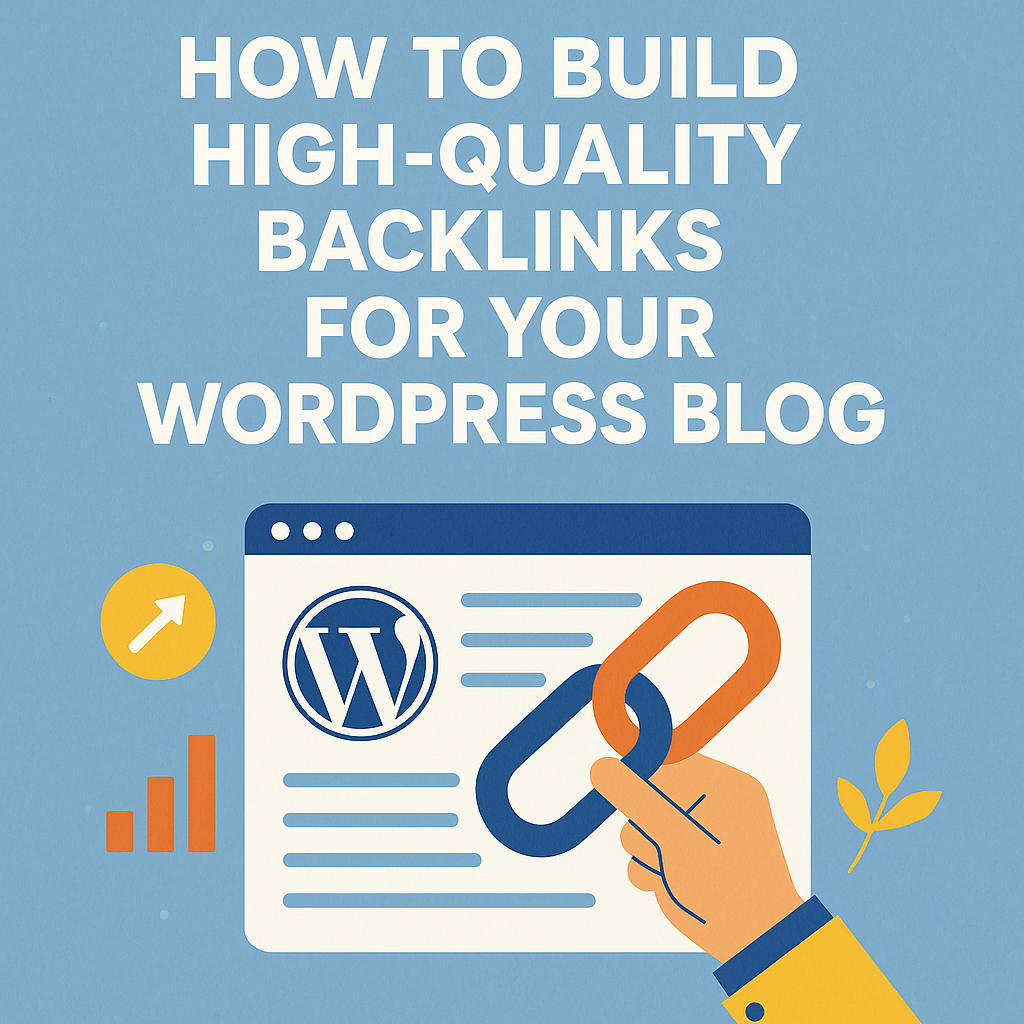What Are Backlinks?
A backlink is a hyperlink from one website to another. In the context of SEO, a backlink to your blog is seen as an endorsement from another site. The more high-quality backlinks you have, the more likely search engines like Google are to trust and rank your content higher in search results.
There are two main types of backlinks:
- DoFollow Backlinks: Pass on SEO value (link juice) and help improve your domain authority.
- NoFollow Backlinks: Do not pass SEO value directly, but can still drive traffic and increase visibility.
Why Backlinks Matter for WordPress SEO
- Boost Search Engine Rankings: More quality backlinks mean higher SERP positions.
- Increase Domain Authority: Helps your blog become more trustworthy in Google’s eyes.
- Drive Referral Traffic: Backlinks can generate traffic from other sites.
- Faster Indexing: Helps search engine bots find and index your content more quickly.
Characteristics of a High-Quality Backlink
- Comes from a reputable and authoritative website
- Is contextually relevant to your blog niche
- Uses natural anchor text
- Is placed within the body of the content
- Has a DoFollow tag
Best Strategies to Build High Quality Backlinks for WordPress
Create Link-Worthy Content
Quality content is the foundation of any successful link-building strategy. Focus on creating:
- In-depth guides
- Original research and case studies
- Infographics and visuals
- Listicles and how-to posts
Tip: Use tools like Ahrefs or SEMrush to find content in your niche that already has a lot of backlinks. Create something even better (known as the Skyscraper Technique).
Guest Blogging
Write high-quality guest posts for other reputable blogs in your niche. In return, include a link back to your WordPress blog in the author bio or within the content (if allowed).
Steps:
- Find guest post opportunities using Google searches like “your niche + write for us”
- Pitch unique and relevant topics
- Follow the blog’s editorial guidelines
Broken Link Building
This involves finding broken links on other websites and suggesting your content as a replacement.
How to Do It:
- Use tools like Check My Links or Ahrefs
- Identify broken links on high-authority sites in your niche
- Reach out to the webmaster with a polite email and your suggested replacement
Leverage Social Media and Online Communities
Promoting your content on platforms like Twitter, Facebook, LinkedIn, Reddit, and niche forums can increase visibility and attract backlinks.
Focus On:
- Engaging with communities related to your niche
- Answering questions on Quora and including relevant links
- Sharing posts in Facebook Groups and LinkedIn discussions
Get Listed in Resource Pages
Many websites have resource pages listing helpful content. Reach out and suggest your blog post as a valuable addition.
How to Find Them:
- “keyword + useful resources”
- “keyword + best blogs”
- “keyword + helpful links”
Collaborate with Influencers and Bloggers
Building relationships with other bloggers can lead to natural backlinks.
Ideas:
- Interview industry experts and ask them to share the post
- Collaborate on roundup posts
- Comment on other blogs to build rapport before pitching
Use HARO (Help A Reporter Out)
HARO connects journalists with expert sources. By providing useful quotes and insights, you can earn backlinks from high-authority news outlets.
Tips for HARO Success:
- Respond quickly to queries
- Be concise and offer real value
- Include a link to your WordPress blog in your bio
Optimize Internal Linking First
Before going after external backlinks, make sure your internal linking is strong. This not only boosts user experience but also spreads link equity within your own site.
Internal Linking Best Practices:
- Use keyword-rich anchor text
- Link to both new and older posts
- Avoid overlinking from a single post
Tools to Help You Build Backlinks
- Ahrefs: Great for backlink analysis and competitor research
- SEMrush: All-in-one SEO tool for link building and keyword tracking
- Moz Link Explorer: Useful for checking domain authority and link profiles
- BuzzSumo: Helps you find popular content to emulate or reach out to
- Hunter.io: Helps find email addresses for outreach
Backlink Building Mistakes to Avoid
- Buying Links: Violates Google’s guidelines and can lead to penalties
- Excessive Low-Quality Directory Submissions: Often considered spammy
- Using Irrelevant Anchor Text: Confuses search engines
- Over-Optimizing: Too many links from the same domain or using the same anchor text repeatedly
- Ignoring NoFollow Links: While not as powerful, they still offer value through traffic and exposure
Monitoring and Maintaining Your Backlinks
Once you’ve earned backlinks, it’s important to monitor their performance and maintain link health.
Best Practices:
- Use Ahrefs or Google Search Console to track backlinks
- Disavow spammy or toxic links
- Reach out to webmasters if a quality backlink is removed or broken
How Long Does It Take to See Results?
Backlink building is a long-term strategy. You may start to see some results in a few weeks, but significant improvements often take 3–6 months or longer.
Factors That Influence Speed:
- Domain age and authority
- Quality and quantity of backlinks
- Competitiveness of your niche
Final Thoughts
Building high-quality backlinks for your WordPress blog requires time, consistency, and a strategic approach. While it may seem challenging at first, the long-term rewards in terms of traffic, rankings, and authority are well worth the effort.
By focusing on value-driven content, ethical outreach, and relationship-building, you’ll create a sustainable backlink profile that supports your blog’s growth for years to come.
Ready to take your WordPress SEO to the next level? Start implementing these backlink strategies today and watch your blog thrive.


